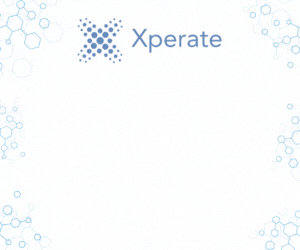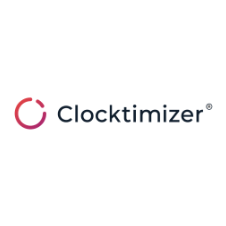Webinar watchtime – a single source of truth: Data, LPM and Pricing
Earlier this week we held the sixth in our ongoing series of webinars surrounding pricing, LPM and process (or change) management. This edition was hosted together with Elevate, and focused on whether it was possible for law firms to have a single source of truth in their data. We were joined by Royale Price, the Director of Pricing and Matter Management at Greenberg Traurig; and Stephen Allen, Vice President of getting shit done at Elevate (yes, we also think more job titles should sound like this). Our own CEO, Pieter van der Hoeven, joined to set questions and share insights from the Clocktimizer perspective.
This edition proved interactive, with plenty of questions from the audience. Our panelists were also able to share a lot of practical advice on improving data integrity and integrating pricing and LPM at the right places in your firm. As such, we are sharing a wider wrap up of all of their advice for those who couldn’t make the webinar.
How do you make sure your data is reliable?
We kicked off the webinar with a poll to determine how accurate data currently is among the audience.
Unsurprisingly, the results were mixed. 52% of listeners felt that their data sources were reasonably reliable. However, as many as 15% reported that they didn’t really have any matter data to rely on at all. In total, 45% of the audience were either using unreliable, bad, or non-existent data to support their pricing and LPM efforts. Clearly, there is a large opportunity within legal services to improve data collection and analysis.
Stephen Allen began by address the three potential core issues with bad data collection:
Is time entry done in a disciplined manner? Firms should ensure that lawyers are accurately representing how much time was spent on an activity. Second-guessing whether you spent one hour or two will fundamentally change fee quotes at a later stage,
How are people recording their time? Identify whether time is being recorded against the first code in the drop-down list, or whether the code is correctly applied. Block billing is inaccurate and provides inaccurate data for your firm and the client.
How often is an activity happening? When we develop pricing structures, you make a prediction of the frequency that activity occurs. These predictions are essential and when they are shown to be inaccurate, this data can be fed back into the system to make future pricing decisions more accurate.
Royale also highlighted the importance of using the narrative to help increase the accuracy of your activity recording. At Greenberg Traurig, they rely on Clocktimizer to automatically categorise their narratives into activities. This gives more granular data and insights. However, this must be done in conjunction with improving the quality of narratives.
Finally, both panelists highlighted the importance of changing internal culture and incentives to improve data quality. For Royale, when she began showing attorneys what the pricing and LPM teams could do with good data, they understood the importance of accurate time recording. By demonstrating how data is used, you encourage better practices. For Stephen, you need to address internal culture. At Hogan Lovells, he often heard from young lawyers who would take seven hours to complete work but would only record four because of the shame they felt at taking so long. Rooting out that culture of shame leads to more accurate data and more accurate pricing and LPM.
Pricing by codes, tasks or phases?
For one audience member, there was difficulty in finding and promoting alternatives to the ABA tasks codes internally at the firm. This led to a more general discussion about whether codes, phases, or tasks are the best for pricing and LPM at a firm. How much detail is too much, and are all insights useful?
It is a question that all of our panelists have struggled with. Pieter shared that at Clocktimizer, we initially identified activities. However, there are so many individual activities that go on in a matter that it can become an overwhelming amount of data and not helpful when pricing. Instead, we now guide firms to group like activities together to make data more helpful and digestible in pricing and LPM.
On the other end of the scale, we have codes. As noted by Royale, codes can be too inaccurate. Motion to Dismiss in ABA Litigation codes doesn’t exist. It actually could be filed under three different codes. As such, Greenberg Traurig have developed their own consensus about which codes to apply for which activities. This returns Greenberg to that single source of truth as time is always filed in the same way. This enables like-for-like comparisons between matters. As the panelists all noted, consistently applying your classification system is key. Finally, Pieter did point out that those looking to find an alternative to ABA codes, should keep an eye on the SALI alliance, who is developing a system that rethinks and replaces codes.
Our panelists shared a couple of tips to guide pricing and managing matters by phases or codes with the audience:
For most LPMs, allocating budgets by phases is the easiest way to keep matters on track. Most LPMs will not need to keep track of the exact division of hours by activity. However, they will need to immediately see that this phase has used 80% of the budget for only 60% of the activities. This directional insight can keep matters on track and enables LPMs to ask the right questions.
Granular insights work best for post matter analysis. Where matters don’t go to plan, and more granular analysis, against tasks rather than phases, is best. You can then identify exactly why a matter went over budget, and feed that information into your next pricing arrangement.
Map out decision points against phases. It is impossible to determine exactly what will happen in a matter, but you can map out where your firm can make decisions and reevaluate pricing. In litigation matters at Greenberg, Royale and the team only price the pleading phase of the matter. At that point, they have a more accurate picture of the work that will need to be done under discovery and can offer a more accurate pricing proposal to the client. Consider this strategy for other matter types too.
How do you scale pricing and LPM to touch every matter?
For many firms, working out how to scale pricing and LPM is a tough issue. Royale and Stephen shared a couple of important ways to scale pricing in a sustainable way for your firm.
“We have a system available to all attorneys – a financial dashboard. It contains time entries, fees, financial data: everything our attorneys need to manage their matters. Alongside that, we have a pricing and LPM team for complex matters. We assess what the needs are of each practice group or client or attorney. Some are complex and need our help. Some have routines that don’t need our input much. Our goal is to ensure we are meeting the needs of our clients and attorneys.” Royale Price
For Royale, the key is to assess how much support is needed first. Every matter is different and so is every matter management style. The key is to measure what is needed and to provide that service.
In a similar vein, Stephen shared a strategy that he used at Hogan Lovells during his time there. Data needs are arranged into three tiers, which offer different levels of insights based on an assessment of needs. The underlying data stream is a single source of truth, but the sophistication of the insights varies. 75% of lawyers get access to the headline information – tracking the high-level numbers like budget use and hours written. The next tier gets detailed insights to keep an eye on which teams are logging hours, or something similar. Finally, the third tier is full data access, along with the intervention of LPM and pricing teams.
How can you measure the success of pricing and LPM?
Finally, our panelists were asked to tackle one of the more challenging questions posed in our webinars. What is the metric of success of pricing and LPM? Unsurprisingly, both of them had different answers.
Are needs being met? For Royale, it is difficult to put a financial metric to the success of her teams. Instead, they try and assess how well client and attorney needs are being met. This can be done through research or identifying win/loss rates of firm bids.
Are you reducing write-offs? For Stephen, one simple way of identifying successful pricing and LPM is whether write-offs are reducing.
Final thoughts
Finally, our panelists wrapped up the webinar with a core message. For Stephen, it was important to ensure that data quality is good from the outset. Bad data leads to bad decisions. For Royale, it was important to ensure you are sharing that data. It gives people the tools they need to make better decisions for the firm.
This webinar was particularly engaging and we enjoyed discussing this topic, and the audience participation. A big thank you again to Royale and Stephen for attending and we look forward to hosting another one soon. Keep an eye on our social media for more details.
Interested in learning what Clocktimizer can do for your firm? Book a demo today!



